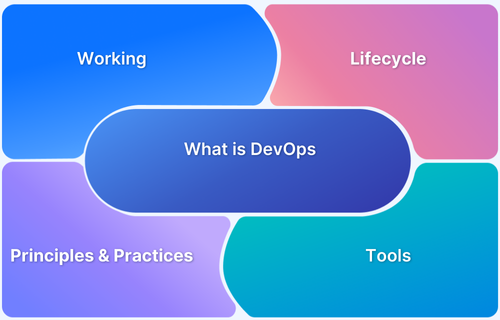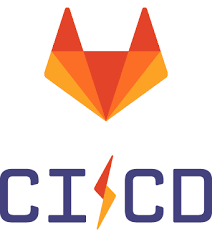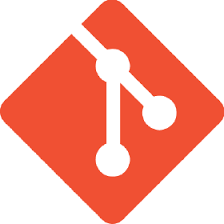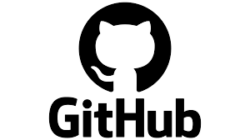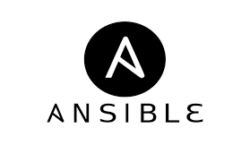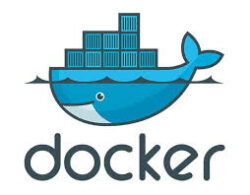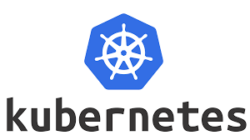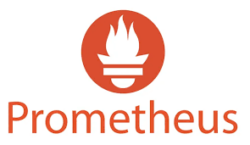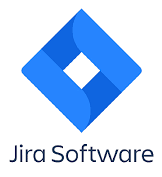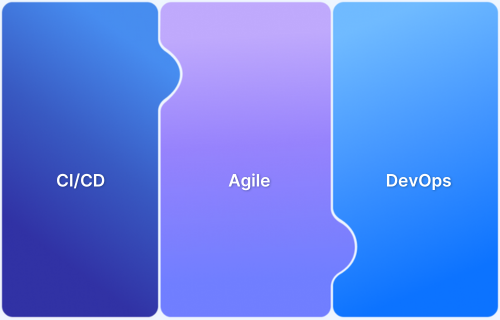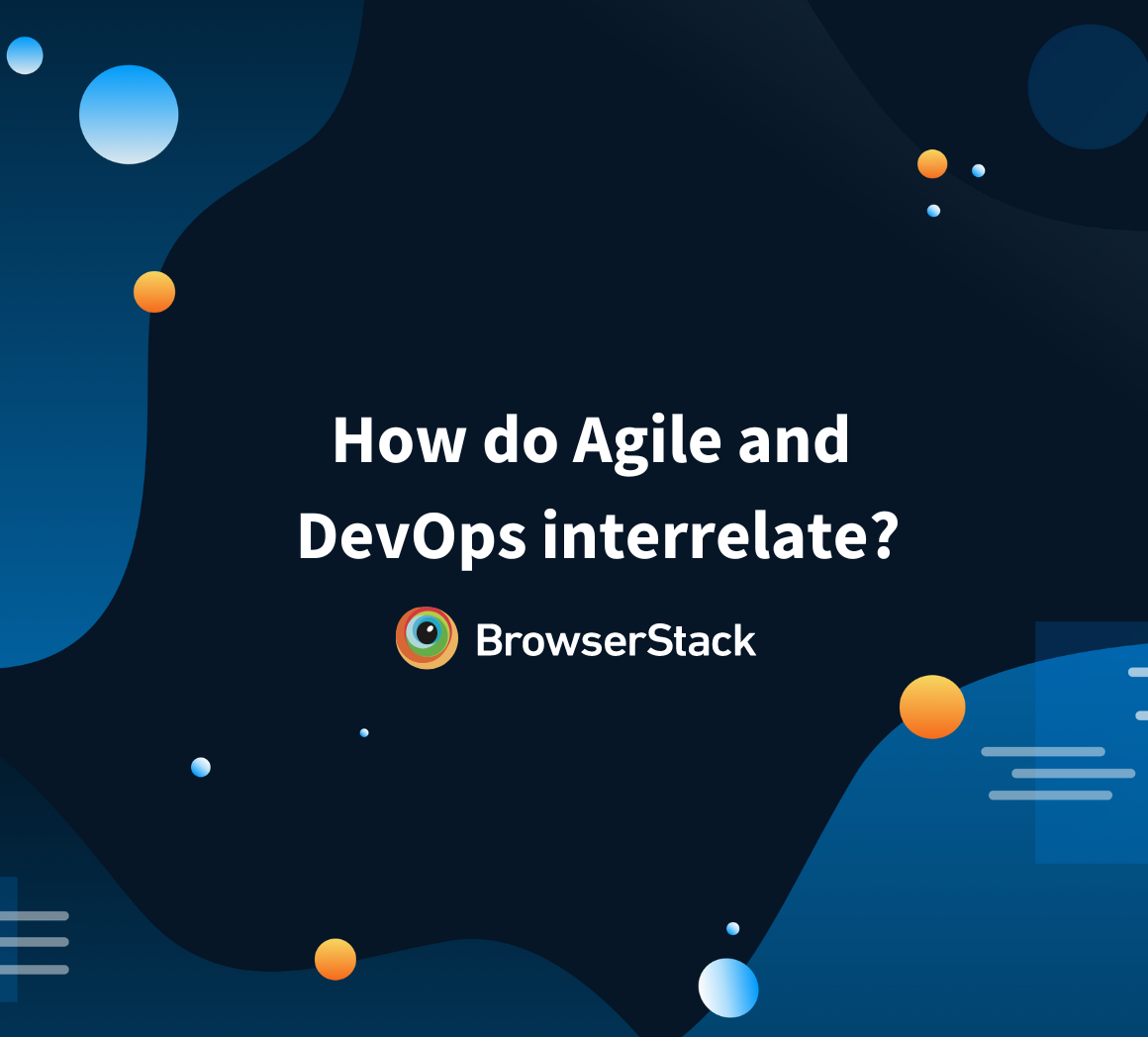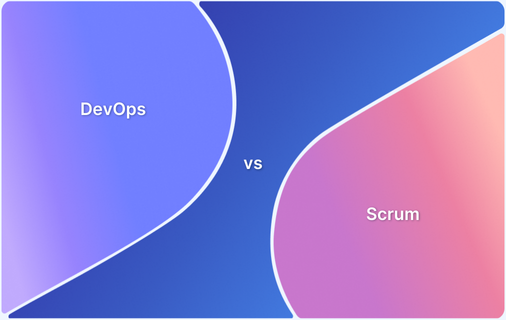DevOps helps companies respond quickly to market needs and preserve a competitive advantage by breaking down team silos, promoting a culture of shared ownership, and creating efficient processes.
Overview
What is DevOps?
DevOps is an set of practices, tools and principles in software engineering that combines development (Dev) and operations (Ops) to boost the overall software lifecycle. It prioritizes cooperation, automation and continuous improvement to produce faster, higher-quality software.
Benefits of DevOps
- Automates manual processes
- Improves the frequency of deployment
- Increases speed and quality of released software
- Shorter system development lifecycle
- Achieves faster time to market
Understand what DevOps is, its lifecycle, why it matters, its four critical phases and benefits, and how to adopt a DevOps model successfully with this comprehensive guide.
What is DevOps in Software Engineering
DevOps is a set of practices, tools, and principles that promotes a collaborative approach to automating the processes between software development (Dev) and IT operations (Ops). DevOps focuses on automation and continuous integration/continuous delivery (CI/CD) and promotes a culture of shared ownership.
The origin of DevOps
DevOps originated in 2007 when Patrick Debois, an IT consultant, recognized the need for improved cooperation between development and operations teams. “DevOps” was termed in 2009, and Belgium hosted the first DevOpsDays conference. This concept garnered great attention in the early 2010s, with various organizations implementing DevOps methods to optimize their development and deployment workflows.
DevOps Example
Consider a software corporation that has implemented continuous integration and continuous delivery (CI/CD) pipelines.
In this environment, developers are constantly writing code and committing changes. Each commit triggers automated tests, and if they pass, the code is deployed to a staging environment automatically.
Then, the operations team analyzes the application’s performance and shares feedback with the developers. This cycle accelerates creation, testing, deployment, and feedback. This helps the organization offer new features and updates faster than traditional approaches, thus improving responsiveness and efficiency.
Read More: Importance of DevOps Team Structure
How DevOps Works
DevOps depends on a collaborative approach that integrates development and operations teams to streamline software delivery. The main goal of DevOps is faster, more reliable, and efficient software development and deployment.
How DevOps Works can be understood through these facets :
- Continuous Integration: Developers merge code changes frequently through automated testing to ensure consistent code quality and early issue detection.
- Continuous Delivery: Automated deployment processes reduce manual intervention and enable faster, more reliable release cycles.
- Collaborative Workflow: Traditional silos are broken down when teams collaborate by using shared tools. This improves communication and drives continuous improvement.
- Infrastructure as Code: Technical teams manage and configure infrastructure programmatically, ensuring system consistency and reproducibility.
- Monitoring and Optimization: Real-time performance tracking enables proactive problem detection and continuous system enhancement.
DevOps Lifecycle
The DevOps lifecycle is a continuous, iterative process that combines software development and IT operations to speed up the delivery of high-quality software.
It is composed of multiple interrelated phases:
- Plan: In this stage, the scope, requirements, and goals of the project are defined. Teams prioritize and organize tasks, and workflows and set objectives for development.
- Code: Developers use version control systems to properly manage changes to their code.
- Build: The code is compiled and packed in a deployable format using automated build tools.
- Test: Manual tests and automated tests (like regression testing and unit testing etc.) are run to verify that codes are free of bugs and function as expected. Tools like BrowserStack are used in this stage.
- Deploy: Tested code is automatically pushed to production or staging environments.
- Operate: The deployed application’s performance, stability, and security are tracked in real-time by the operations team.
- Monitor: The application and infrastructure are monitored continuously to spot issues and opportunities for improvement.
- Feedback: User comments and performance data are gathered and analyzed to help guide future development cycles.
Read More: DevOps Testing Strategy
Why DevOps Matters
DevOps matters because it transforms software development and delivery, resulting in a more efficient, collaborative, and responsive IT environment. Here are reasons why DevOps is an integral part of the software lifecycle:
- Faster time-to-market: DevOps accelerates the release of new features and upgrades and helps businesses fulfill market demands on the go.
- Improved Collaboration: DevOps encourages greater communication and shared accountability among development and operations teams, promoting enhanced problem-solving.
- Enhanced Product Quality: Continuous integration and testing during the development process gives rise to better stability, reliability and secure software solutions.
- Increased efficiency: Automating repetitive processes and streamlined workflows reduce manual errors. This lets teams prioritize innovation and problem solving.
- Better Customer Satisfaction: Faster feature delivery, quicker issue fixes, and enhanced product stability all contribute to a better user experience and customer satisfaction.
- Cost Reduction: DevOps approaches improve resource utilization, decrease downtime, and eliminate costly errors, resulting in overall cost reductions for organizations.
- Continuous Improvement: The DevOps strategy promotes an environment of continuous learning and optimization, resulting in constant improvement of processes and products.
Read More: Why is DevOps Important?
DevOps Practices
DevOps practices are a collection of approaches and technologies for streamlining software development and delivery processes. These techniques attempt to improve cooperation, automation, and efficiency across the whole development lifecycle.
Some key DevOps practices are:
- Continuous Integration (CI): Developers frequently merge code changes into a shared repository, where automated builds and tests are run to spot issues early on.
- Continuous Delivery (CD): Code changes are automatically built, tested, and prepared for release, ensuring a deployment-ready product at any time.
- Infrastructure as Code (IaC): Infrastructure is managed and provisioned via code to facilitate consistency and reproducibility across environments.
- Automated Testing: Extensive automated tests are run during the development process to detect bugs early and maintain code quality.
- Continuous Monitoring: Systems are constantly monitored for performance, security, and user behavior to identify issues and areas for improvement.
- Collaboration and Communication: Development and operations teams work closely together, sharing responsibilities and knowledge throughout the software lifecycle.
- Version Control: All code and configuration changes are tracked using version control systems, enabling easy rollbacks and collaborative development.
- Microservices Architecture: Applications are built as a collection of small, independent services, allowing for easier updates and scalability.
Tools Needed for DevOps
There are several tools that can streamline the DevOps process. Here are the main categories of DevOps tools:
1. Continuous Integration/Continuous Delivery (CI/CD)
CI/CD tools automate code integration, testing, and deployment processes, streamlining software delivery and enabling quick, reliable releases in DevOps environments.
Here are the top tools used in CI/CD:
1. Jenkins
Jenkins is an open-source automation server that offers extensive plugin support and flexibility. It lets developers build, test, and deploy their code across various platforms. Developers can integrate changes to their codebase on the go and verify them via automated testing.
2. GitLab CI/CD
GitLab CI/CD provides support for version control and CI/CD pipelines. It uses YAML files to specify pipelines and offers built-in container registry and package management.
3. CircleCI
CircleCI is a cloud-based CI/CD platform known for its ease of use and quick setup. It supports multiple programming languages and frameworks and provides features like parallelism and caching to speed up builds.
Read More: How to perform Test Automation with CircleCI
2. Version Control
Version control tools are software systems that track, manage, and store changes to code over time.
Commonly used tools here are :
1. Git
Git is a distributed version control system that lets you track changes, create branches, and handle code history seamlessly. It is an open-source tool that allows teams to work on projects together, merge changes, and revert to previous versions when required.
2. GitHub
GitHub is a web-based platform centered around Git. It provides additional features such as Pull Requests for Code Review and Collaboration, Issue tracking for project management, GitHub Actions for CI/CD Automation, GitHub Pages for static website hosting, and Comprehensive integration capabilities with other development tools.
3. Bitbucket
Bitbucket is another web-based Git repository management system that offers Built-in CI/CD pipelines, Jira integration for efficient project management, fine-grained access controls and security features, Support for both Git and Mercurial version management systems, code analysis, and vulnerability screening.
3. Configuration Management
Configuration management tools automate the process of defining, deploying, and maintaining consistent system configurations across multiple environments.
Here are the popular tools used in configuration management:
1. Ansible
Ansible is an agentless automation tool that uses YAML for configuration. It’s known for its simplicity and ease of use. Ansible automates infrastructure provisioning, application deployment, and configuration management across multiple systems from a single platform.
Read More: A Detailed Guide on Ansible Tower
2. Chef
Chef is a configuration management tool that uses a Ruby-based domain-specific language (DSL). Users can write “recipes” and “cookbooks” to automate infrastructure configuration. You can use tools provided by Chef Workstation to create, test, and distribute configuration policies.
4. Containerization
Containerization tools enable developers to package, distribute, and run applications with their dependencies in isolated environments, allowing for consistent deployment across different platforms which streamlines DevOps workflows.
Popular tools used for containerization are:
1. Docker
Docker is a platform that revolutionizes application development by enabling containerization. It packages applications with their entire runtime environment, ensuring consistent performance across different systems.
Docker allows developers to create lightweight, portable containers that can run anywhere, simplifying deployment and reducing infrastructure complexities.
2. Kubernetes
Kubernetes is an advanced container orchestration platform that automates the deployment, scaling, and management of containerized applications. It provides robust features for maintaining application health, managing complex distributed systems, offering seamless scaling and self-healing capabilities, and ensuring high availability.
5. Infrastructure as Code
Infrastructure as Code tools helps teams automatically create and manage computer systems and networks by writing configuration instructions as code, making it easier to set up and maintain consistent IT environments.
Leading tools are:
1. Terraform
Terraform is an open-source infrastructure as code (IaC) tool that lets users define and manage cloud resources across various providers.
Terraform’s key features include its ability to plan changes before applying them, manage complex dependencies between resources, and support multiple cloud platforms.
2. AWS CloudFormation
AWS CloudFormation is a service offered by Amazon Web Services to help users model and set up AWS resources.
The tool automates creating, updating, and deleting resources in a coordinated and predictable manner. It is particularly helpful for managing complex AWS environments, to facilitate consistency across various deployments, and enable infrastructure-as-code practices within the AWS ecosystem.
6. Monitoring and Logging
Monitoring and logging tools continuously track system performance and record events, helping teams identify issues in real time.
Popular tools include:
1. Prometheus
Prometheus is an open-source monitoring system designed for cloud-native environments. It collects and stores time series metrics using a pull model over HTTP.
Prometheus is particularly effective for monitoring containerized and microservices architectures. It offers robust scalability and integrates with Kubernetes.
2. Grafana
Grafana is a powerful platform for data visualization and monitoring. It supports multiple data sources and provides customizable dashboards with various visualization types.
Grafana excels in creating interactive dashboards that make complex data easily understandable, widely used for system performance monitoring and business intelligence.
Read More: Top 21 Monitoring Tools in DevOps
7. Testing
DevOps testing tools are automated platforms that integrate testing throughout the software development lifecycle.
Some popular tools are:
1. BrowserStack
BrowserStack is a cloud-based testing platform that enables DevOps teams to test web and mobile applications across thousands of real browsers and devices. It simplifies cross-platform testing by providing instant access to diverse environments, allowing developers to validate application performance and user experience efficiently.
2. Selenium
Selenium is an open-source automation testing framework that enables web browser automation. By supporting different programming languages, Selenium lets DevOps teams create powerful, repeatable test scripts that can be integrated into continuous integration pipelines. This helps facilitate consistent and comprehensive web application testing.
Read More: DevOps Shift Left Testing: A Detailed Guide
8. Collaboration and Project Management
Collaboration and project management tools help DevOps teams communicate, track work, share progress, and coordinate tasks across projects.
Some leading tools are:
1. Jira
Jira is a project management tool designed for software teams to track and manage work. It helps teams plan projects, assign tasks, and monitor progress using customizable workflows.
Jira supports agile methodologies like Scrum and Kanban, making it easy to organize complex software development projects.
2. Trello
Trello is a visual project management tool that uses boards, lists, and cards to help teams organize work. Its simple, drag-and-drop interface allows users to create tasks, assign team members, and track project progress easily. Trello is particularly useful for small teams and personal task management.
9. Artifact Repository
Artifact repository tools are centralized storage platforms that help DevOps teams store, manage, and share software packages, dependencies, etc across different development environments.
Some popular tools in this regard are:
1. Nexus
Nexus is an open-source repository manager that stores and manages software components, dependencies, and artifacts. It supports various repository formats and offers a free version with essential features.
Nexus is known for its stability and straightforward setup.
2. JFrog Artifactory
Artifactory is a universal artifact repository manager that supports numerous package formats. It provides advanced features like high availability, replication, and security scanning. Artifactory offers both open-source and commercial versions.
10. Security
DevOps security tools help teams automatically detect, prevent, and fix security vulnerabilities throughout the software development lifecycle.
Popular tools are:
1. SonarQube
SonarQube is a static code analysis tool that helps developers identify bugs, vulnerabilities, and code smells in their code. It provides continuous feedback on code quality and ensures that the best practices are followed throughout the development process.
2. Aqua Security
Aqua Security specializes in securing cloud-native applications, particularly those using containers. It automates vulnerability scanning and compliance checks for container images, helping teams detect and fix security issues early in the development lifecycle.
Read More: Top DevOps Tools
Core DevOps Principles
DevOps is a set of practices that combines software development (Dev) and IT operations (Ops). Its core principles are :
DevOps Principles:
- Collaboration
- Automation
- Continuous Integration and Continuous Delivery (CI/CD)
- Customer-Centric Mindset
- Continuous Improvement
- Collaboration: DevOps encourages the development and operations teams to work together. This allows for open communication and shared duties between teams.
- Automation: DevOps boosts productivity, reduces mistakes, and frees up teams to work on new ideas by automating repetitive tasks.
- Continuous Integration and Continuous Delivery (CI/CD): This concept says that changes to code should be regularly added to a shared repository and sent to production automatically. CI/CD lets teams quickly add new features and fix bugs while lowering the risks.
- Customer-Centric Mindset: DevOps teams put customer feedback first and use it to help them make decisions about development.
- Continuous Improvement: DevOps encourages a mindset of learning and adapting by asking teams to regularly look at their processes and make changes based on what they learn.
How to Adopt a DevOps Model
While adopting a DevOps model may seem challenging at the outset, all it requires is a few simple steps :
- Review Procedures: Start with a review of the current procedures to find out inefficient processes and avenues for change.
- Determine Objectives: Then, specific objectives should be determined for the DevOps program. For example, a team may want faster release times, better collaboration, etc.
- Implement DevOps Practices: A gradual implementation of DevOps practices is required. Starting with basic steps like CI/CD and progressing to Continuous Testing and monitoring can be a useful approach.
- Communicate: Open channels of communication and encouraging collaboration between development and operations teams are also key here.
- Set Up Tools: Automation tools and frameworks should be set up for testing, deployment, and monitoring.
- Monitor: Ultimately, the team must monitor process performance and take in feedback to adjust processes on the fly.
The Four phases of DevOps
The DevOps model consists of four key phases that streamline the software development and delivery process.
DevOps Phases:
- Plan
- Code
- Build
- Test
- Plan: This is the initial phase where teams come together to define project requirements and objectives. This includes collecting input from stakeholders, roadmap creation, and outlining milestones to ensure everyone is on the same page.
- Code: During the coding phase, developers write the application code based on the defined requirements. This phase emphasizes best practices for writing clean, maintainable code that can be easily tested and integrated.
- Build: After coding, the build phase involves compiling the code and preparing it for testing. Automated tools are often used to create builds quickly and efficiently, ensuring that any errors are detected early in the process.
- Test: In this phase, the application undergoes various tests to identify bugs and ensure it meets quality standards. Automated testing tools help streamline this process, allowing for faster feedback and quicker iterations.
How DevOps can benefit from AI and ML?
AI and Machine Learning (ML) can significantly enhance DevOps practices and result in improved efficiency, quality, and security. Some ways in which AI and ML can benefit DevOps are through :
- Automation: AI automates repetitive tasks such as testing, deployment, and monitoring, allowing teams to prioritize complex issues and speed up the development process.
- Proactive Issue Resolution: AI analyzes data to spot patterns and predict potential problems before they occur, enabling teams to address issues early and reduce downtime.
- Enhanced Code Quality: AI tools continuously monitor code for bugs and vulnerabilities, improving overall code quality and ensuring adherence to best practices.
- Cost Efficiency: By optimizing resource allocation and improving processes, AI helps reduce operational costs and enhances productivity.
- Security Improvements: AI enhances security by automating vulnerability assessments and compliance checks, ensuring that applications are secure throughout the development lifecycle.
How is DevSecOps related to DevOps?
DevSecOps is an advancement of DevOps that incorporates security measures throughout the software development lifecycle. While DevOps emphasizes collaboration between development and operations teams to improve software delivery speed and quality, DevSecOps adds an important layer by making security a shared responsibility of all teams.
Security is not an afterthought with DevSecOps; it is integrated throughout the planning, coding, constructing, and testing phases. This proactive strategy aids in the early detection and mitigation of security vulnerabilities, hence lowering risks and assuring safer software releases. Embedding security into the DevOps architecture allows organizations to achieve faster, more secure software development while retaining high quality.
DevOps and CI/CD
DevOps uses Continuous Integration (CI) and Continuous Delivery/Deployment (CD) to improve cooperation and accelerate software development.
CI entails routinely merging code changes into a shared repository, where automated builds and tests detect problems early. This ensures that the code is constantly deployable, which speeds up the development process.
CD extends CI by automating the delivery of code changes to production, allowing for fast and dependable updates. This reduces manual errors and improves software quality.
Together, CI/CD helps organizations achieve faster delivery cycles and improve collaboration between development and operations.
Read More: DevOps CI: Continuous Integration in DevOps
How does DevOps support the Cloud-native Approach?
DevOps contributes to the cloud-native approach by improving collaboration, automation, and scalability in software development. It does so through :
- Practice Integration : Development and operations are combined in DevOps. This aligns well with agility and continuous delivery which are the core principles of cloud-native.
- Automation: Like cloud-native, DevOps also utilizes automation tools for streamlined testing, deployment, and monitoring workflow. This results in faster and more robust software releases
- Leveraging microservices: DevOps encourages microservice architecture, which leads to independent deployment and high scalability. This is key for cloud-native approaches as well.
- Scalable builds: Cloud-native applications rely on cloud-based infrastructure for scalability. Implementing DevOps ensures the efficient deployment and monitoring of these applications.
- Continuous Feedback: The cloud-native approach enables ongoing monitoring and feedback, a core principle of DevOps that helps teams quickly identify and resolve issues, enhancing software quality.
Benefits of DevOps
DevOps brings several benefits that improve software development and delivery :
- Faster Releases: DevOps allows teams to deliver new features and updates quickly through automation and continuous integration.
- Better Collaboration: By breaking down barriers between development and operations, DevOps encourages teamwork and communication.
- Improved Quality: Continuous testing helps catch bugs early, resulting in better software with fewer issues.
- Increased Efficiency: Automating repetitive tasks saves time and reduces errors, allowing teams to focus on important work.
- Regular Feedback: Continuous monitoring provides insights into how applications perform, helping teams make improvements.
- Enhanced Security: Integrating security practices throughout development ensures that vulnerabilities are addressed early.
- Cost Savings: Efficient processes and better resource use help lower operational costs.
- Happier Customers: Faster delivery of features and quick responses to feedback lead to better user experiences.
Read More: How Can DevOps benefit SaaS Companies
Challenges of adopting DevOps
Adopting DevOps can bring many benefits, but it also comes with several challenges :
- Cultural Resistance: Many team members may be resistant to change, preferring traditional methods over the collaborative approach that DevOps promotes. This can hinder progress and adoption.
- Lack of Skilled Personnel: Finding professionals with the necessary skills in both development and operations can be difficult, making it challenging to implement DevOps practices effectively.
- Tool Integration Issues: Integrating various DevOps tools can be complex and time-consuming. Ensuring that these tools work well together is crucial for a smooth workflow.
- Inconsistent Environments: Development, testing, and production environments may differ, leading to deployment issues. Standardizing these environments is essential for success.
- Misplaced Focus on Tools: Organizations may focus too much on selecting tools rather than fostering a collaborative culture and clear processes, which are vital for effective DevOps.
- Security Concerns: Integrating security practices into the DevOps process (DevSecOps) can be challenging but is necessary to protect applications throughout their lifecycle.
DevOps Culture
DevOps culture emphasizes collaboration and shared responsibility between development and operations teams, breaking down silos to enhance communication and efficiency. It fosters a sense of joint ownership over the software from development to maintenance, encouraging continuous improvement and learning from experiences.
By prioritizing client demands, teams guarantee that the product they produce fulfills user expectations. Furthermore, team members are given the freedom to take initiative and make decisions, which stimulates them and increases overall productivity.
What is a DevOps Engineer?
A DevOps engineer is an IT professional who connects software development and IT operations to ensure smooth code releases and deployments.
They facilitate collaboration between teams, implement automation tools for continuous integration and delivery, monitor system performance, manage cloud services and infrastructure, maintain version control systems, and ensure software quality through automated testing.
Read More: Prerequisites for DevOps Engineers
Conclusion
Overall, DevOps improves the software development lifecycle by encouraging collaboration, automation, and continuous improvement. This results in faster and high-quality releases.
Tools like BrowserStack lets you further improve the process by leverging a cloud-based testing platform that enables teams to test applications across several browsers and devices smoothly. This functionality ensures that software is tested properly before deployment, to improve both quality and user experience.
Frequently Asked Questions
1. Does DevOps need coding?
Yes, DevOps requires some coding abilities, albeit the level of expertise required varies by role.
Basic coding and scripting skills are required for automating processes, maintaining CI/CD pipelines, and customizing tools. A DevOps engineer’s effectiveness can be considerably improved by being familiar with languages such as Python, Bash, or Ruby.
2. What is the main purpose of DevOps?
The main purpose of DevOps is to bridge the gap between development and operations teams and build a streamlined workflow that delivers software faster and with higher quality.
3. Does DevOps pay well?
Yes, DevOps pays well. In the US, entry-level salaries range from $73K to $125K, while experienced professionals can earn between $132K and $250K. In India, entry-level salaries typically range from ₹4.1 lakhs to ₹15 lakhs per annum, with experienced engineers earning upwards of ₹12.7 lakhs to ₹20 lakhs or more.
